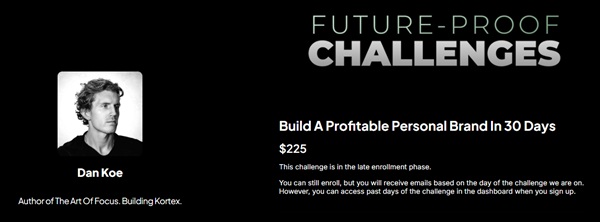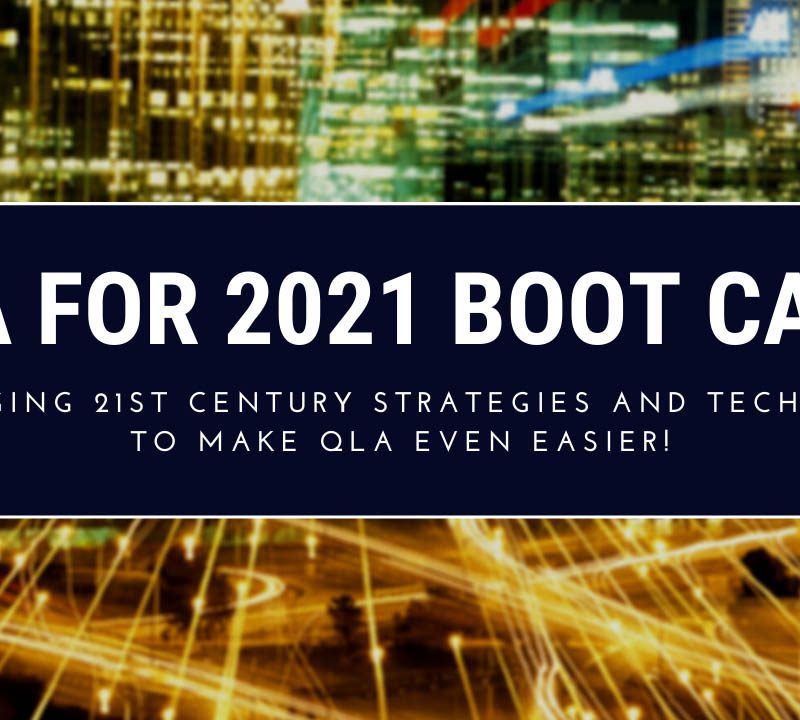[GroupBuy] Build A Profitable Personal Brand In 30 Days – Dan Koe
$62.00
Discount 20% if your total cart over $150
- Satisfaction Guaranteed
- Fast and forever download link
- Secure Payments
- Reupload FREE
Description
Build A Profitable Personal Brand In 30 Days is a system, not just a course, promising to equip you with the skills to thrive in the digital age. It’s designed to provide a streamlined, actionable plan to establish your online presence, create engaging content, grow your social media following, and ultimately, monetize your personal brand. This guide dives deep into its core principles, target audience, and how it stacks up against the modern creator landscape.
Build A Profitable Personal Brand In 30 Days
The modern digital landscape demands more than just a resume; it requires a demonstrable online presence. Dan Koe’s “Build A Profitable Personal Brand In 30 Days” offers a pragmatic, skill-focused approach to navigate this new reality. It distinguishes itself from traditional online courses by promising a structured, daily lesson plan designed for tangible results, not overwhelming information.
The Evolution of Work and the Digital Imperative
The traditional 9-to-5 job is no longer the sole route to success, or even financial security. The rise of the internet and social media has created a parallel universe of opportunity where individuals can showcase their skills, build an audience, and generate income independent of conventional employment. This shift emphasizes the importance of online visibility – whether you’re seeking a job, attracting clients, or growing a business, your online presence is your new storefront.
The program underscores the necessity of adapting to this change. Your online brand isn’t just an ego boost; it’s your digital resume, your portfolio, and your network all rolled into one. It allows you to control your narrative, demonstrate your expertise, and connect directly with potential employers, customers, or partners. In a world where AI is rapidly automating traditional tasks, the ability to cultivate a unique personal brand becomes not just an advantage, but a necessity for long-term career security and financial independence. The old rules of career advancement are being rewritten, and those who master the art of personal branding are best positioned to thrive in the new order.
Furthermore, the course implicitly acknowledges the democratization of knowledge. Information once held by gatekeepers is now freely accessible. The real challenge lies not in accessing information but in filtering and applying it effectively. A strong personal brand allows you to cut through the noise, establish credibility, and become a trusted source of information in your niche.
The Beginner’s Trap and the Systematization Solution
Many aspiring creators face a crippling paradox: they understand the need for an online presence, but they’re paralyzed by the sheer volume of information and conflicting advice. The common symptoms include staring blankly at a screen, overwhelmed by the possibilities and unsure where to start. This paralysis stems from a lack of structure and a failure to prioritize the essential elements of building a brand.
“Build A Profitable Personal Brand In 30 Days” identifies this “beginner’s trap” and offers a systematic solution. Instead of a broad, theoretical overview, the program provides daily, actionable steps that break down the complex process of personal branding into manageable chunks. This drip-fed approach allows participants to build momentum, develop consistency, and avoid the overwhelming feeling of having to master everything at once. The emphasis is on practical application and consistent progress, rather than passive information consumption.
This focus on systematization is crucial because it addresses the core problem of information overload. In the age of ubiquitous content, it’s easy to get lost in the weeds, chasing the latest trends and tactics without building a solid foundation. Koe’s program aims to cut through the noise and provide a clear, step-by-step path for beginners to follow. By focusing on fundamental skills and building a consistent routine, the program empowers participants to overcome the initial hurdles and start seeing tangible results.
Redefining Personal Branding: Authenticity and Value
The term “personal brand” often conjures images of manufactured personas and superficial self-promotion. However, Koe’s approach emphasizes authenticity and value creation. He suggests that the ultimate goal is to “get paid for being yourself,” implying a focus on genuine expression and meaningful contribution. This reframing is significant because it shifts the emphasis from image management to genuine connection.
Building a successful personal brand is not about pretending to be someone you’re not; it’s about discovering and amplifying your unique voice and perspective. It’s about identifying your strengths, clarifying your values, and sharing your knowledge and experiences in a way that resonates with others. This approach requires introspection, self-awareness, and a willingness to be vulnerable.
Furthermore, the focus on value creation ensures that participants are not just building a brand for the sake of it, but rather creating something that is genuinely useful and impactful. By focusing on providing value to their audience, participants can build trust, establish authority, and create a sustainable business model. This approach is not only more authentic, but also more effective in the long run.
Acquiring High-Value Skills for the Digital Age
“Build A Profitable Personal Brand In 30 Days” promises to deliver a comprehensive skill set that is essential for success in the modern digital landscape. These skills include personal branding, content creation, social media growth, monetization, and AI integration. Mastering these skills not only empowers participants to build a successful online business, but also makes them more valuable in traditional employment settings.
Personal branding is the foundation of online success. This involves identifying your niche, defining your target audience, and crafting a unique value proposition. Content creation is the engine that drives your brand. The program focuses on both short-form content for engagement and long-form content for authority and sales. Social media growth is about building a community and expanding your reach. The program emphasizes strategies that are independent of algorithm fluctuations. Monetization is about turning your online presence into a revenue stream. The program provides guidance on creating digital products and making your first sale.
Finally, AI integration is about leveraging artificial intelligence to enhance all of these skills. AI can be used to generate content ideas, optimize social media posts, and automate marketing tasks. By mastering these skills, participants can future-proof their careers and build a sustainable online business. These skills are not just valuable for entrepreneurs; they are also highly sought after by employers in a wide range of industries.
Fortune 500 Indian Ceos
The rise of Indian CEOs in Fortune 500 companies is a compelling example of how personal branding can translate into leadership and global influence. While “Build A Profitable Personal Brand In 30 Days” focuses on individual endeavors, the principles of clear communication, strategic positioning, and value creation are equally applicable to corporate leaders. Understanding the narrative surrounding these CEOs offers valuable insights into the power of a well-crafted professional image.
The Ascent of Indian Leadership in Corporate America
The increasing prominence of Indian CEOs in Fortune 500 companies is a testament to their strong leadership skills, strategic thinking, and adaptability. These leaders have not only navigated complex global markets, but also fostered innovation and growth within their organizations. Their success stories highlight the importance of education, hard work, and a commitment to excellence.
Many of these CEOs hold advanced degrees in engineering or business administration from prestigious universities in India and the United States. This strong educational foundation has enabled them to analyze data, solve problems, and make informed decisions. Furthermore, their experience working in diverse cultural environments has honed their ability to communicate effectively and build strong relationships with stakeholders from different backgrounds. Their leadership style is often characterized by a blend of vision, empathy, and a relentless focus on execution. They are able to inspire their teams, create a culture of innovation, and drive results.
The success of Indian CEOs in Fortune 500 companies has also paved the way for other aspiring leaders from diverse backgrounds. Their stories serve as an inspiration for individuals seeking to climb the corporate ladder and make a significant impact on the world. By showcasing their achievements, they have helped to break down barriers and create a more inclusive and equitable business environment. Their journey highlights the importance of meritocracy and the value of diverse perspectives in leadership positions.
Personal Branding Lessons from Corporate Giants
Although the scale differs dramatically, the strategies used by Fortune 500 Indian CEOs share common threads with the principles taught in “Build A Profitable Personal Brand In 30 Days.” These CEOs understand the importance of curating their public image, communicating their vision clearly, and building trust with stakeholders. They use platforms like LinkedIn and public appearances to share their perspectives on industry trends, company strategy, and social issues.
Effective communication is crucial for any leader, regardless of their background or industry. Indian CEOs have demonstrated the ability to articulate their vision in a clear and concise manner, both internally to their employees and externally to investors and the public. They are skilled at conveying complex ideas in a way that resonates with a wide audience, building confidence and buy-in. Strategic positioning is also key. These CEOs actively shape the narrative around their companies and themselves, highlighting their strengths and differentiating themselves from competitors. They understand that perception is reality, and they work diligently to manage their public image.
Furthermore, building trust is essential for long-term success. Indian CEOs have emphasized the importance of integrity, transparency, and ethical behavior. They are committed to building trust with their employees, customers, and investors by consistently delivering on their promises and operating with the highest ethical standards. This commitment to trust has helped them to build strong, sustainable organizations that are able to weather economic downturns and other challenges.
Case Studies: Specific Examples of CEO Branding
Consider Satya Nadella of Microsoft. His transformation from a corporate insider to a globally recognized thought leader involved a deliberate effort to showcase his vision for the future of technology, his empathy for customers, and his commitment to diversity and inclusion. His consistent messaging and authentic communication style have solidified his position as a respected and influential figure in the tech industry. Sundar Pichai of Google similarly cultivates an image of thoughtful innovation and user-centricity. His appearances are carefully crafted to project competence, humility, and optimism.
These CEOs understand that their personal brand is inextricably linked to the brand of their companies. They actively manage their public image to enhance their company’s reputation and attract top talent. They use their platforms to advocate for important social causes, demonstrating their commitment to corporate social responsibility. Their actions reflect a deep understanding of the interconnectedness of business, society, and personal brand.
Furthermore, they are not afraid to take risks and experiment with new technologies. They are early adopters of social media and other digital platforms, using them to connect with their employees, customers, and stakeholders in real-time. Their willingness to embrace innovation has helped them to stay ahead of the curve and maintain their companies’ competitive edge.
Transferable Lessons: Applying CEO Strategies to Personal Branding
The strategies employed by these fortune 500 indian ceos can be adapted for individual use. Just as they communicate a clear vision for their companies, individuals should define their own unique value proposition. Just as they build trust with stakeholders, individuals should focus on creating authentic connections with their audience. And just as they manage their public image, individuals should be mindful of the content they create and share online.
One of the key takeaways is the importance of consistency. Just as these CEOs maintain a consistent message across all their platforms, individuals should strive to create a cohesive and unified online presence. This means ensuring that your profile picture, bio, and content all align with your personal brand. It also means being mindful of the tone and style of your communications.
Another important lesson is the importance of providing value. Just as these CEOs share their insights and expertise with the world, individuals should focus on creating content that is helpful, informative, and engaging. This could include blog posts, articles, videos, or social media updates. By providing value to your audience, you can build trust, establish authority, and attract new followers.
Chamath Newsletter
The Chamath newsletter is a highly visible example of how individual thought leadership can cut through the noise and build a substantial following. It demonstrates the power of direct communication, unfiltered opinions, and a willingness to engage in public discourse. While the content and style may not be universally applicable, the underlying principles of providing valuable insights and cultivating a unique voice are consistent with the goals of “Build A Profitable Personal Brand In 30 Days.”
The Power of Direct Communication: Newsletters as a Branding Tool
In an era of algorithms and social media saturation, newsletters offer a direct line of communication with your audience. Unlike social media posts that can be easily missed or buried, newsletters arrive directly in subscribers’ inboxes, ensuring a higher level of engagement. This makes newsletters a powerful tool for building relationships, sharing valuable content, and promoting your personal brand.
Newsletters also provide a platform for longer-form content that allows you to explore complex topics in depth. Unlike short social media posts, newsletters give you the space to share your thoughts, insights, and experiences in a more comprehensive way. This can help you to establish your authority and build trust with your audience. Moreover, newsletters give you complete control over the content and design, allowing you to create a personalized experience that reflects your brand. You can customize the look and feel of your newsletter to match your style and tone, creating a consistent brand identity.
Perhaps the most important benefit of newsletters is the direct connection they provide with your audience. When someone subscribes to your newsletter, they are giving you permission to communicate with them directly. This allows you to build a relationship with your subscribers and create a community around your brand.
Chamath Palihapitiya’s Newsletter: A Case Study in Thought Leadership
Chamath Palihapitiya’s newsletter is a prime example of how a strong personal brand can translate into a highly engaged audience. His willingness to express controversial opinions, offer unfiltered analysis, and engage in public debates has attracted a large and loyal following. Despite the occasional backlash, his newsletter continues to be a must-read for many in the tech and finance industries.
Palihapitiya’s newsletter stands out for its bold and provocative content. He is not afraid to challenge conventional wisdom or express unpopular opinions. This willingness to be contrarian has helped him to attract attention and build a reputation as a thought leader. He is also known for his in-depth analysis of market trends, investment opportunities, and macroeconomic issues. His insights are often based on his own experience as a venture capitalist and entrepreneur. His newsletter is characterized by its transparency and authenticity. He is open about his biases and motivations, and he is not afraid to admit when he is wrong. This honesty has helped him to build trust with his audience.
The success of Palihapitiya’s newsletter is a testament to the power of personal branding and the importance of having a unique voice. It demonstrates that people are drawn to authentic and insightful content, even if it challenges their beliefs. His newsletter also illustrates the value of building a direct connection with your audience.
Key Elements of a Successful Newsletter:
Several factors contribute to the success of newsletters like Chamath’s. These include:
- Clear Value Proposition: Subscribers need to understand what they will gain by reading your newsletter.
- Consistent Delivery: Maintaining a regular sending schedule builds anticipation and fosters a sense of community.
- Engaging Content: Newsletters should be informative, entertaining, and thought-provoking.
- Unique Voice: Developing a distinct style and perspective helps you stand out from the crowd.
- Call to Action: Encouraging subscribers to engage with your content or take a specific action can drive results.
A clear value proposition is essential for attracting subscribers. People need to understand what they will gain by reading your newsletter before they sign up. This could be anything from exclusive insights and analysis to discounts and promotions. Consistency is also key. Maintaining a regular sending schedule builds anticipation and fosters a sense of community. Subscribers should know when to expect your newsletter so they can plan accordingly.
Engaging content is crucial for keeping subscribers interested. Your newsletter should be informative, entertaining, and thought-provoking. This could include articles, blog posts, videos, or even just short updates on your work. A unique voice helps you stand out from the crowd. Your newsletter should reflect your personality and your perspective on the world. This will help you to connect with your audience on a deeper level and build a loyal following. Finally, a call to action can drive results. Encouraging subscribers to engage with your content or take a specific action can help you to achieve your goals.
Integrating Newsletter Strategies with “Build A Profitable Personal Brand In 30 Days”:
The principles of building a successful newsletter can be seamlessly integrated with the lessons from “Build A Profitable Personal Brand In 30 Days.” The program’s emphasis on content creation, value delivery, and audience engagement directly translates to crafting a compelling newsletter. By following the program’s daily lessons and implementing the strategies outlined above, participants can effectively leverage newsletters to build their personal brand and connect with their target audience.
First, the core principles of identifying your unique value proposition, discovering your niche, and targeting a specific audience are absolutely essential for the success of your newsletter. The more specific and well-defined your target audience is, the more targeted and engaging your newsletter will be, and the better your results will be. Second, the build a profitable personal brand in 30 days program is very insistent upon creating exceptional, high-quality content that is tailored to your intended audience. In order to attract a dedicated subscriber base, you are going to need content that’s engaging, consistent, and extremely valuable for the reader. This will create a highly valuable resource of information for your customer base and encourage them to refer your newsletter to their friends and colleagues.
Overall, putting in the time and the energy to follow the guidelines of the build a profitable personal brand in 30 days is going to make setting up a great newsletter a lot easier. You will already have a good idea of exactly the kind of customers you want to attract, exactly the type of content that you want to provide to them, and a clear route to monetization via products that you offer your subscribers.
Conclusion
Build A Profitable Personal Brand In 30 Days provides a structured, skill-focused approach to navigate the modern digital landscape. By mastering skills like content creation, personal branding, social media growth, and monetization (and integrating them via AI), individuals can future-proof their careers and build sustainable online businesses. Applying principles from well-known leaders like Fortune 500 Indian CEOs and the bold strategies of newsletters like Chamath newsletter can dramatically enhance your ability to create a notable Chamath newsletter and brand that resonates and provides true value in the ever-evolving digital world.
Sales Page:_https://stan.store/thedankoe/p/build-a-profitable-personal-brand-in-30-days
Delivery time: 12 -24hrs after paid






 Ryan Deiss – Craft A High-Converting Homepage v2
Ryan Deiss – Craft A High-Converting Homepage v2  Eric Preston & Yashu Sharma – Lead Generation Mastery
Eric Preston & Yashu Sharma – Lead Generation Mastery  Traffic & Funnels – Million Dollar Month
Traffic & Funnels – Million Dollar Month